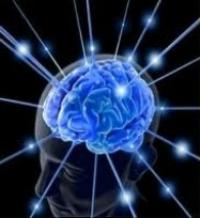
Closing the Gap between what we know and what we do
Multiplying Connections’ approach is based on a growing body of scientific evidence about the dynamic relationship between our experiences as children and our physical and mental health as adults. Thanks to this research, we now know that caring, positive relationships have a powerful and positive effect on the neurobiology of the developing brain. Conversely, trauma—abuse, neglect, exposure to violence, lack of attachment, and other adverse childhood experiences—affect the structure and chemistry of the brain and can stunt its natural growth and maturation. These negative experiences have an effect not only in childhood, but throughout life.
The Physiology of Trauma
A variety of studies have pinpointed the impact of trauma on key structures of the developing brain. These includes the hippocampus, which helps us with memory and spatial navigation; the amygdala, which enables us to process emotions; and the cortex, which plays a role in complex cognitive behaviors, personality expression, and moderating correct social behavior.
In the short-term trauma causes an intense, biological "alarm state," including a rush of adrenaline, cortisol and other hormones as well as intense fear. We stop thinking so that we can fight against or flee the dangerous situation. We have trouble processing information. In children repeated exposure to traumatic events can overload this alarm state and begin to short-circuit healthy neural connections, and disrupt the brain’s basic architecture. Ultimately, the brain adapts towards surviving this trauma. This in turn compromises core mental, emotional, and social functioning and normal, healthy development.
From Science to Society
The societal effects of these early developmental insults are manifested in a variety of troubling ways, challenging and extending our human services systems. Several studies confirm that as many 90% of people receiving public mental health services diagnosed with major mental illness have experienced physical and/or sexual abuse as children.4 Other studies have shown that as many as nine out of ten boys and seven of ten girls in juvenile detention reported traumatic experiences in their childhood.5 As one director of a drop-in center for adults who experienced trauma as children has put it, "The brains of adult survivors are fragmented and resemble a hard drive on a computer drive that has crashed."
Healing and Recovery through a Trauma-Informed Approach to Care
The effects of trauma can be severe, but science also tells us they can be reversed. Biochemical and brain imaging studies are demonstrating that the brain has a powerful ability not only to survive trauma, but to heal itself as well.7 Multiplying Connections and a variety of other programs across the country are validating new strategies that undo or at least decrease the effects of childhood trauma. The core principles underlying these approaches include recognizing the family as the constant in a child’s life; providing children with close and consistent positive relationships; creating rich environments and predictable routines that are conducive to learning; and offering developmentally appropriate, safe, and individualized opportunities to develop new skills and express emotions.
For More Science
ACE Study
The ACE Study is an ongoing collaboration between the Centers for Disease Control and Prevention and Kaiser Permanente. Led by Co-principal Investigators Robert F. Anda, MD, MS, and Vincent J. Felitti, MD, the ACE Study is perhaps the largest scientific research study of its kind, analyzing the relationship between multiple categories of childhood trauma (ACEs), and health and behavioral outcomes later in life.
http://www.acestudy.org/
The Science of Early Childhood
This page on the Center for the Developing Child at Harvard Web site provides excellent written and visual information that explains and shows how the architecture of the brain develops, the importance of serve and return relationships for healthy development and the impact of trauma and toxic stress on brain development. http://developingchild.harvard.edu/topics/science_of_early_childhood/
The Child Trauma Academy
The Child Trauma Academy, a not-for-profit organization based in Houston, Texas, is a collaborative of individuals and organizations working to improve the lives of high-risk children through direct service, research, and education.
http://www.childtrauma.org/
The Dana Foundation
The Dana Foundation supports brain research through grants and educates the public about the successes and potential of brain research. Dana produces free written and on-line publications. http://www.dana.org

